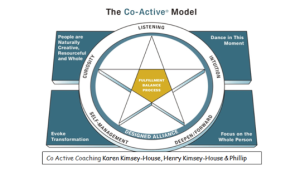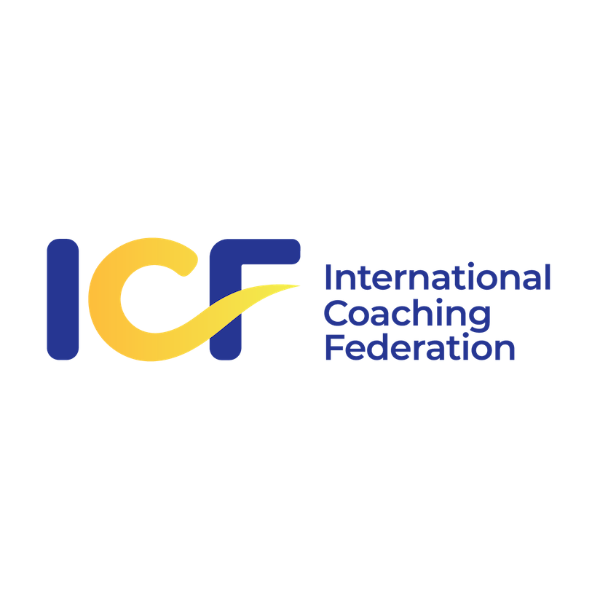The ICF defines coaching as “partnering with clients in a thought-provoking and creative process that inspires them to maximize their personal and professional potential”.
The process of coaching often unlocks previously untapped sources of imagination, productivity, and leadership.
The journey of personal transformation and professional growth is often achieved through effective coaching. I have experienced this transformation myself, continue to do so and at the heart of this lie the GROW and Co-Active Coaching models, each one equally important in coaching.
The GROW model, an acronym for Goal, Reality, Options, and Will, provides a structured methodology that coaches use to guide clients towards self-determined success.
The Co-Active coaching model enriches this journey by fostering a deeply collaborative and holistic relationship between coach and client, one that transcends mere goal achievement to embrace the totality of the human experience.
The GROW model, developed in the 80’s by Sir John Whitmore, is one of the most referenced models used today. I came across it 6 years ago and have used it in many situations but like to think I have honed it in my coaching practice today. When I began my coaching journey, I was too focused on the model, not my client, and was trying to remember all parts. That has changed: I am now incorporating the model into my coaching practice more naturally. The model is no longer a restrictive “box ticking” exercise, as it once may have been.
For me the GROW model is very important to coaching but must be pushed to the background and used under the surface, and the coaching conversation must focus solely on the client. Being fully present is key and listening to everything being said, but often it is what is not being said is as important, if not more so, in any coaching conversation. If one focuses too much on the model, then the coach remains “in their own head”, thereby missing important cues in tone, cadence, energy shifts and body language. Some other vital aspects of the coaching relationship are to bring a sense of empathy to any session, to truly listen to the coachee and sometimes injecting a level of lightness and humour where appropriate. I have had real “aha” moments in some sessions where a more relaxed posture and some laughs were exchanged between coach and coachee.
Powerful questions are ones that go to the “heart of the matter”. They should arise from the energy of the client but flow through the coach. They should be open ended and not elicit a yes or no but reveal a deeper answer. The most powerful questions usually start with things like “How does this/that, or What can you tell me”, but often can be variations on these.
Co-Active Coaching

The Co-active coaching model is based on 4 key fundamentals.
- People are naturally creative, resourceful, and whole.
- Focus on the whole person.
- Dance in this moment.
- Evoke Transformation.
The “co” in co-active is hugely important. A co-active relationship is very different to any normal conversation. It requires action on both sides and a real intent to listen deeply to our clients. A large part of the learning from the theory and in practicing coaching for me has the awareness to “turn off” my innate desire to solve the problem at hand, and to instead focus on the whole person. My own experience inside sales leadership required me to get tasks done, while “coaching” my teams. Looking back, I know that wasn’t pure coaching and I was not focused on the person, but instead on the task.
As coaches, we must believe the person sitting across from us is a whole person. We also must truly believe that person possesses abundant resources to become aware of what is holding them back, and that they also possess natural creativity to act and solve that themselves. The opposing and incorrect view that someone is fragile and unable to act themselves should not exist in the co-active model, because it shifts the actions onto the coach and therefore negates the power inherent in coaching.
“Dancing in this moment” talks about the dynamic interchange between the coach and the coachee. Inside what is being said, and what is not being said, there is much nuance and so much important information that in any normal conversation this is easily lost. Early in my coaching I became stuck trying to remember powerful questions or trying to remember models, but as coaching practice evolves, this subsides, and being in THIS moment is much more transformative for the client. For the dance to move fluently between the coach and the client, trust must be established. Sometimes this can be formed easily and quickly, but sometimes it can take time.
Most of the time, the client will present with an area of focus, an issue to tackle, or a goal but this will expose an underlying issue, or behaviour that is identified. One that rests at a much deeper human level. It is the job of the coach to see the entire picture and that this is only “one leaf” of the person’s life, not the entire “tree”.
For any coaching relationship to be successful, the entire focus must be solely on the client. Trust must exist, and the coach must hold a vision of the possible for the coachee. There are many dynamics at play in any given moment between both parties, and there are different ways to get to where the client needs to go. I have always felt I possess a strong level of emotional intelligence, but delving deeper into this topic over recent months has given me a lot of new insight into the power of these skills. Being able to recognise one’s emotions and being able to regulate reactions to events helps not only in one’s own life, but crucially, in the coaching relationship.
Central to the models outlined, the coaches’ beliefs, attitudes and judgement must first be noticed, then left parked in any coaching relationship. A belief is simply a feeling of certainty and if we allow our beliefs and attitudes to permeate the relationship, the outcomes will be affected. Approaching every coaching relationship with absolutely no judgement is essential for real change to happen. It can be difficult, but through practice, increased awareness, and reflection, it can be mastered. If we are judging during a coaching session, even if we don’t actually say it, it could easily be picked up by the coachee and that in turn will build a wall, therefore reducing potential outcomes.
Outside of coaching, true listening often is not happening. As coaches we need apply a much higher type of listening, one that focuses on the client and one where we notice facial expressions, body language, tone and more. I have seen the power of things like “paraphrasing” and repeating in different words back to the coachee to re-affirm what has been said – that has real power.
I have witnessed the power of coaching in the workplace many times. I always tried to bring a coaching mindset to my teams and to the people I work with and have seen organisations and people thrive as a result but also those that suffer greatly because of its absence. There are many metrics around coaching and its effectiveness on people, profits and culture and the benefits being continually proven. People stay longer, work better, have better relationships, find more meaning in their work and much more besides.


